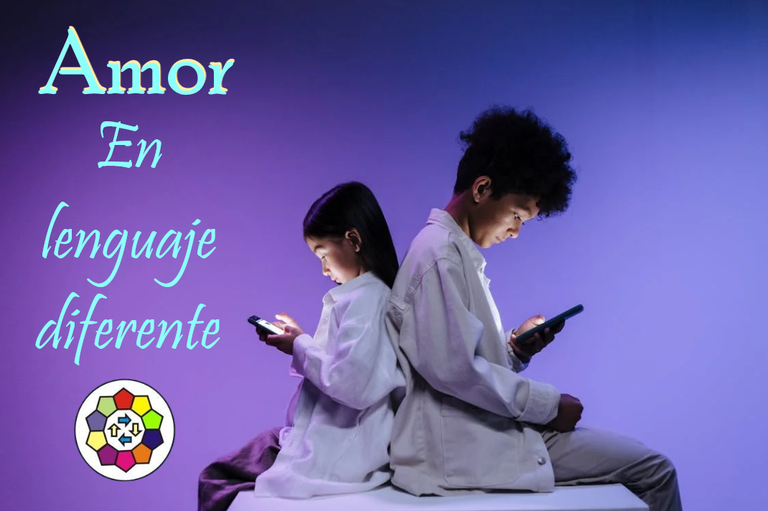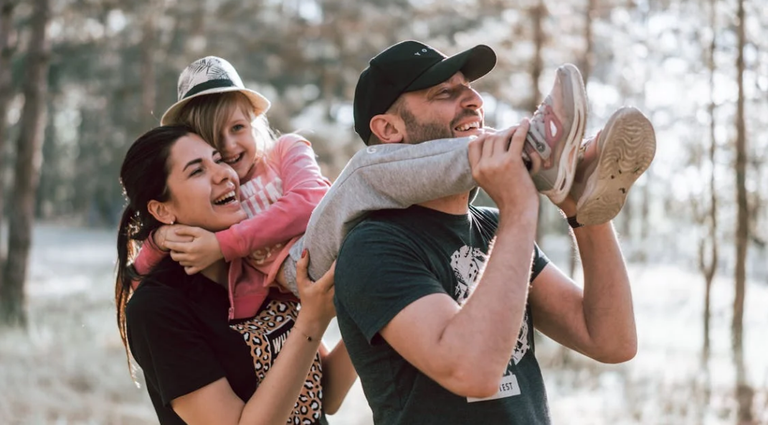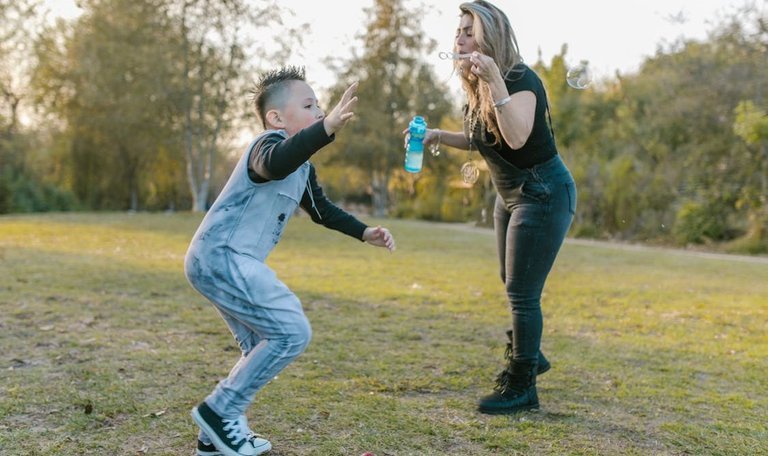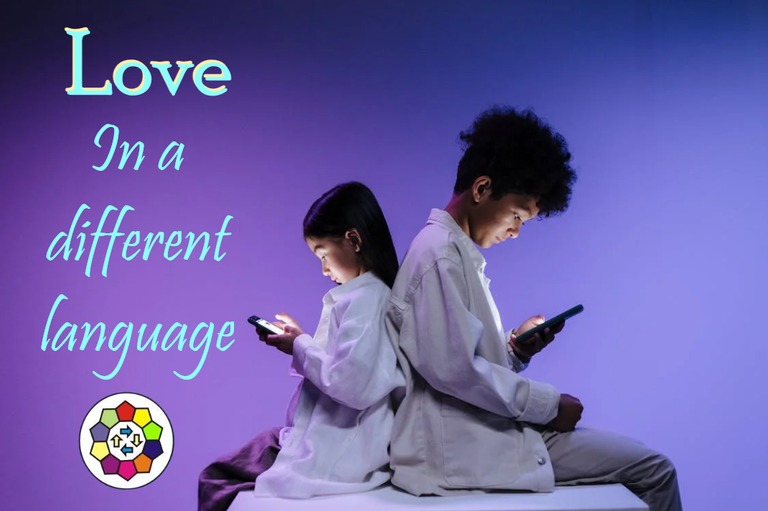

Relacionándome con personas autistas he aprendido a ser más directo y concreto a la hora de especificar lo que quiero.
A comunicar en forma directa lo que deseo, y a dejar poco a la imaginación del otro.
He aprendido a preguntar lo que el otro desea y quiere, a prestar más atención, a ser directo en mis comentarios.
Y que el afecto o la emoción que se expresa, se hace de forma no convencional, sino con múltiples actos, miradas, gestos y acciones simples, en sencillo lenguaje del amor.
Que el afecto está, se siente, se necesita y se transmite, como en todos.


La gente muestra afecto en formas diferentes
Trabajando con las personas, en general, me he dado cuenta de que todos expresamos el amor, las emociones y los sentimientos, en forma diferente.
¿Por qué iba a ser distinto en las personas neurodiversas?
Ellos también lo hacen y tienen formas específicas de comunicar o expresar afecto a la gente que sienten cercana, sean con palabras o gestos; aunque no puedan expresar las emociones múltiples que normalmente muestra una persona neurotípica.
De hecho, dado que son muy honestos y directos al explicar y decir las cosas, es muy probable que necesiten soluciones más que muestras de afecto ante los problemas.
Es probable que al estar contigo constantemente estén demostrándote afecto, amor.
Recordando la hipersensibilidad que tienen, hay dificultad para procesar una información a través del tacto, por lo que, la cercanía les inquieta, así como las texturas diferentes como el césped, tipos de tela o la arena.
Muchas veces se evitan las superficies de paredes y objetos.

¡Se golpea!
¿Has notado que se pueden golpear fuertemente y aparentemente no sentir dolor? Persiguen el objetivo de comunicarse, de que se les preste atención.
Igualmente, autolesionarse ayuda a controlar el estrés.
Y debes haber notado que a muchos les encanta estar sin ropa y descalzos, no les gustan los juegos de contacto y tienen ansiedad a la hora de realizar tareas como cortarse las uñas o el pelo.
Todo eso es emocionalidad diversa.
Pero hay situaciones que muestran perfectamente sus afectos, que hablan de lo que sienten y que tienen una manera específica de vivenciar el bienestar, el amor y la ternura hacia la gente que les rodea.
Te dejo un artículo que podría explicar el porqué una persona con TEA evita los abrazos.
Y otro, Mi hijo Rodrigo, el autismo y los miles de besos, donde una madre explica cómo logró manifestaciones de afecto más allá del trastorno de hipersensibilidad de su hijo.

Expresar o demandar afectos
Esta corta reflexión de hoy en @mundo.autismo, nace a partir de darme cuenta, de cuántas personas aún creen que estos niños no pueden sentir, expresar afecto y demandarlo, a pesar de toda la guía y las explicaciones que damos a través de las redes sociales, los blogs, reuniones de padres y orientadores.
Hay que dejar en claro que ellos son sinceros, y que la expresión de cariño es diferente, porque el contacto físico les es difícil de gestionar.
Así que, comprende su mundo, sus características; y recuerda que a ellos les gusta estar cerca de los que aman, que necesitan que alguien los vea y que conecte con ellos de alguna manera, con miradas, con palabras.
Que es importante que se les muestres afecto en forma directa y sin roces ni ruidos, evitando que puedan ponerse nerviosos; y que tu presencia les dé confianza y seguridad.
Ellos sí se identifican con sus padres, con sus amigos y educadores, con sus orientadores y sus psicoterapeutas.
Si tienes un hijo con este diagnóstico, puedes haberte dado cuenta de que está muy unido a ti y que ríe, siente, llora y manifiesta emociones, al igual que cualquier niño.


We All Express Affection in Our Own Way! -The Complicated Language of Love- Reflections on Autism


By interacting with autistic people I have learned to be more direct and concrete in specifying what I want.
To communicate in a direct way what I want, and to leave little to the imagination of the other.
I have learned to ask what the other person wants and desires, to pay more attention, to be direct in my comments.
And that the affection or emotion that is expressed, is done in a non-conventional way, but with multiple acts, looks, gestures and simple actions, in the simple language of love.
That affection is there, it is felt, it is needed and transmitted, as in everyone.


People show affection in different ways
Working with people, in general, I have noticed that we all express love, emotions and feelings, in different ways.
Why would it be different for neurodiverse people?
They do too, and they have specific ways of communicating or expressing affection to the people they feel close to, be it with words or gestures; even though they may not express the multiple emotions that a neurotypical person normally displays.
In fact, because they are very honest and direct in explaining and saying things, it is very likely that they need solutions rather than displays of affection in the face of problems.
It is likely that by being with you constantly they are showing you affection, love.
Remembering the hypersensitivity they have, there is difficulty to process information through touch, so, closeness makes them uneasy, as well as different textures such as grass, types of fabric or sand.
Wall surfaces and objects are often avoided.

It hits!
Have you noticed that they can hit themselves hard and apparently feel no pain? They pursue the goal of communicating, of having attention paid to them.
Likewise, self-injury helps to manage stress.
And you may have noticed that many love to be barefoot and unclothed, dislike contact play, and have anxiety about performing tasks such as cutting their nails or hair.
All of that is diverse emotionality.
But there are situations that perfectly show their affections, that talk about what they feel and that have a specific way of experiencing well-being, love and tenderness towards the people around them.
I leave you an article that could explain why a person with ASD avoids hugs.
And another one, My son Rodrigo, autism and the thousands of kisses, where a mother explains how she achieved manifestations of affection beyond her son's hypersensitivity disorder.

Expressing or demanding affection
This short reflection today in @mundo.autismo, comes from realizing how many people still believe that these children cannot feel, express affection and demand it, despite all the guidance and explanations we give through social networks, blogs, parent meetings and counselors.
It must be made clear that they are sincere, and that the expression of affection is different, because physical contact is difficult for them to manage.
So, understand their world, their characteristics; and remember that they like to be close to the ones they love, that they need someone to see them and connect with them in some way, with looks, with words.
It is important that you show them affection in a direct way and without friction or noise, avoiding them to get nervous; and that your presence gives them confidence and security.
They do identify with their parents, with their friends and educators, with their counselors and psychotherapists.
If you have a child with this diagnosis, you may have noticed that they are very close to you and that they laugh, feel, cry and show emotions, just like any other child.



Barras separadoras y logo de English, creadas y editadas en Paint.
Separator bars and English logo, created and edited in Paint.
Custom banner by @emiliorios made in Paint, with vectors of:
Pixabay-HonyKunstBanner personalizado de @emiliorios realizado en Paint, con vectores de:Imagen de agradecimiento, tomando el logo de nuestra comunidad y editada en Paint, de:
Thank you image, taking our community logo and edited in Paint, by:
Pixabay-Tara WinsteadSi lo deseas, puedes seguirnos en:
If you wish, you can follow us at:




Felicitaciones!
Gracias por deleitarnos con tan magnífica publicación, la cual fue valorada por @Womentribe una comunidad para destacar el valioso potencial del ser humano.
*Sigue nuestras cuentas:
@Womentribe
suscribete aquí @colmena-139925
twitter
Instagram
Muchas gracias por la caloración, equipo de @womentribe
@tipu curate 8
Que esperas para unirte a nuestro trail de curación y formar parte del "proyecto CAPYBARA TRAIL"
Upvoted 👌 (Mana: 0/75) Liquid rewards.
Muchísimas gracias al equipo de @tipu y a @takeru255 por su apoyo.
@emiliorios, I paid out 0.382 HIVE and 0.157 HBD to reward 5 comments in this discussion thread.
Muchas gracias, equipo de @commentrewarder
Saludos @emiliorios 💙
Ciertamente, hay que entender el mundo del autismo para conocer y cuidar los detalles que pueden garantizar una adecuada respuesta social. Buenos tips los que compartes.
¡Bienvenidas las Delegaciones / Welcome Delegations
Trail de Curación / Curation Trail
Muchas gracias, equipo de @mundo.autismo
.
Saludos, feliz término de semana.Hola, @emiliorios, gracias por escribir sobre este tema. Es un aspecto muy complejo y profundo que necesita difusión y promoción, para que todo podamos consustanciarnos con las idiosincraacia cuandoe estamos frente, sobre todo, niños autistas y sus problemas de comunicación, así podremos comprenderlo mejor y practicar la tolerancia y la paciencia.
¡Saludos y bendiciones!Muchas gracias, @sandracabrera